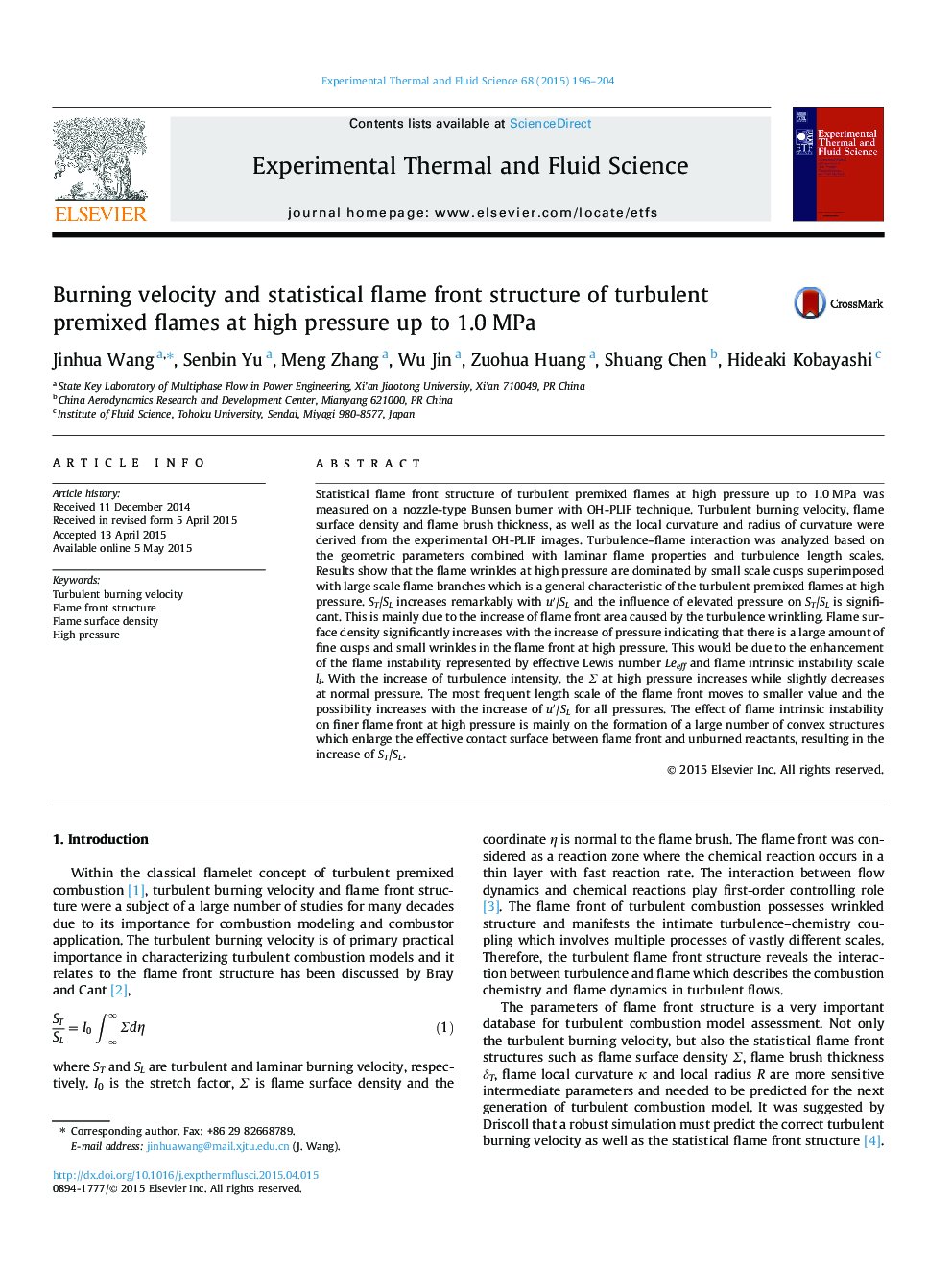| Article ID | Journal | Published Year | Pages | File Type |
|---|---|---|---|---|
| 7052160 | Experimental Thermal and Fluid Science | 2015 | 9 Pages |
Abstract
Statistical flame front structure of turbulent premixed flames at high pressure up to 1.0 MPa was measured on a nozzle-type Bunsen burner with OH-PLIF technique. Turbulent burning velocity, flame surface density and flame brush thickness, as well as the local curvature and radius of curvature were derived from the experimental OH-PLIF images. Turbulence-flame interaction was analyzed based on the geometric parameters combined with laminar flame properties and turbulence length scales. Results show that the flame wrinkles at high pressure are dominated by small scale cusps superimposed with large scale flame branches which is a general characteristic of the turbulent premixed flames at high pressure. ST/SL increases remarkably with uâ²/SL and the influence of elevated pressure on ST/SL is significant. This is mainly due to the increase of flame front area caused by the turbulence wrinkling. Flame surface density significantly increases with the increase of pressure indicating that there is a large amount of fine cusps and small wrinkles in the flame front at high pressure. This would be due to the enhancement of the flame instability represented by effective Lewis number Leeff and flame intrinsic instability scale li. With the increase of turbulence intensity, the Σ at high pressure increases while slightly decreases at normal pressure. The most frequent length scale of the flame front moves to smaller value and the possibility increases with the increase of uâ²/SL for all pressures. The effect of flame intrinsic instability on finer flame front at high pressure is mainly on the formation of a large number of convex structures which enlarge the effective contact surface between flame front and unburned reactants, resulting in the increase of ST/SL.
Related Topics
Physical Sciences and Engineering
Chemical Engineering
Fluid Flow and Transfer Processes
Authors
Jinhua Wang, Senbin Yu, Meng Zhang, Wu Jin, Zuohua Huang, Shuang Chen, Hideaki Kobayashi,
